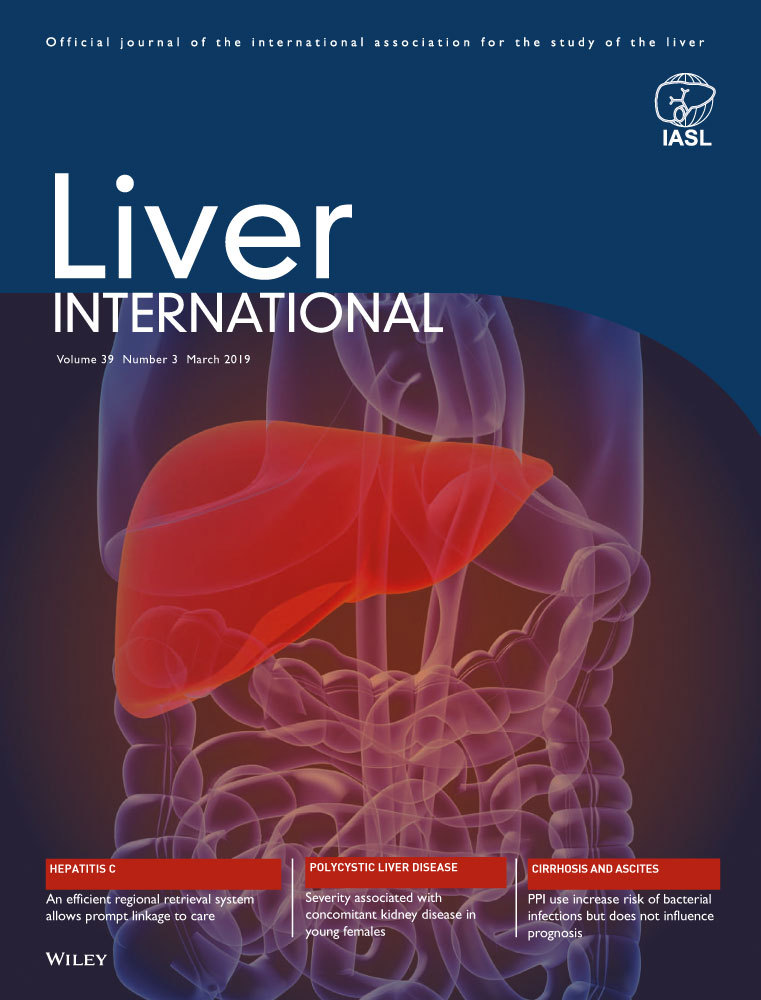The impact of HCV eradication by direct-acting antivirals on the transition of precancerous hepatic nodules to HCC: A prospective observational study
Funding information
This work was supported by JSPS KAKENHI Grant Number JP16K15357.
Abstract
Background & Aims
It remains controversial whether the eradication of hepatitis C virus (HCV) by interferon (IFN)-free anti-HCV therapy using direct-acting antivirals (DAAs) suppresses or promotes hepatocellular carcinoma (HCC) development. We investigated the influence of HCV eradication by DAA therapy on HCC development, by observing changes of non-hypervascular hypointense nodules (NHHNs) by gadolinium-ethoxybenzyl-diethylenetriamine pentaacetic acid-enhanced magnetic resonance imaging (EOB-MRI).
Methods
A total of 401 patients treated with DAA therapy who did not have a history of HCC were enrolled in this prospective cohort study. All patients underwent EOB-MRI prior to the start of DAA therapy and were followed up periodically after therapy. The progression of NHHNs detected at baseline to typical HCC, as indicated by hypervascularization and the incidence of newly emergent NHHNs, was analyzed.
Results
In comparison of patients who achieved sustained virologic response (SVR) with propensity score-matched patients with persistent HCV infection, there was no difference in the incidence of hypervascularization of NHHNs to typical HCC among patients who had NHHNs at baseline. Among patients who did not have NHHNs at baseline, the incidence of the new emergence of NHHNs did not differ between study patients and propensity score–matched patients with persistent HCV infection.
Conclusions
During a 2-year observation period after SVR, the eradication of HCV by IFN-free DAA therapy did not suppress or enhance HCC development. (UMIN000017020).
CONFLICT OF INTEREST
Hidenori Toyoda reports lecturer fees from AbbVie and Bristol-Myers Squibb. Takashi Kumada report lecturer fees from Gilead Sciences and Bristol-Myers Squibb.




